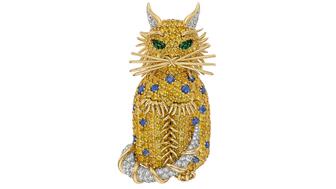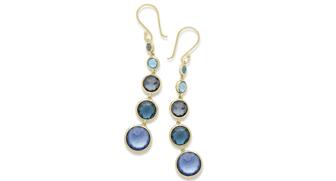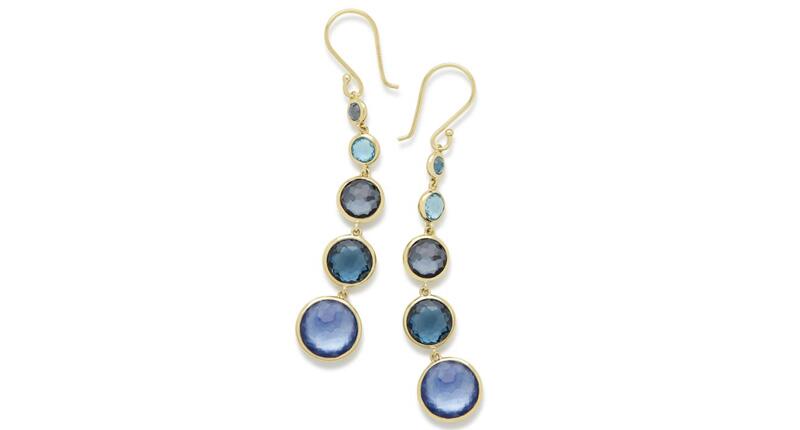The National Jeweler editors revisit the most noteworthy industry happenings and design trends from 2025.
Gold Passes $2K Per Ounce as Jewelry Demand Plummets
And the price is likely to keep rising this year.

London—The story of gold jewelry demand and price in the first half of the year is inextricably linked to the COVID-19 pandemic.
As nations across the world enacted lockdown restrictions, primarily during the second quarter, to slow the spread of the coronavirus, demand for both gold and gold jewelry plummeted, the World Gold Council said in its most recent Gold Demand Trends report.
Even as the pandemic severely hampered consumer demand, it also provided an opportunity for investment, with central banks and governments fueling record flows into gold-backed ETFs, lifting the gold price to record highs in several currencies.
As of Friday, the precious metal was trading at $2,034.80 per ounce, according to Kitco.com, a major increase since the start of the year.
In January, the gold price averaged $1,560.67, Kitco charts show.
The gold price continued to rise until mid-March, when it fell to a low of $1,474.25 as governments worldwide began enacting stay-at-home orders.
Then it began its rise again, increasing every month until it passed the $2,000-per-ounce price point in August, reaching its highest point in eight years.
And it doesn’t seem likely it will level out anytime soon, according to some experts.
A few sources have predicted the price of gold could increase to as much as $3,000 per ounce within the next 18 months or even by year’s end.
As the gold price continues its climb, jewelry demand has gone the other way.
According to the World Gold Council, gold jewelry demand was nearly cut in half during the first half of the year, falling 46 percent year-over-year to 572 tons, which it said is the lowest since it started keeping track.
It’s also around half of the 10-year average of 1,106 tons.
In Q2, demand reached a quarterly low of 251 tons, a 53 percent decline year-over-year, as consumers across the world felt the effects of lockdown and the resulting economic slowdown.
In the U.S., demand lost some of the momentum it had gained in recent years, falling 34 percent year-over-year in the second quarter to 19.1 tons, the lowest quarter in WGC’s series.
H1 demand was also down, declining 21 percent to an eight-year low of 41.9 tons.
WGC said store closures due to COVID-19 were the “clear reason” for the decline, made even more severe because the lockdown encompassed two holidays—Easter and Mother’s Day.
Demand “collapsed” in April
While the U.S. experienced a drop-off, China and India were the biggest contributors to the global demand decline in the first half of the year, WGC said. Their size when compared to the rest of the world means weakness there has “an overwhelming impact” on global demand.
Q2 jewelry demand in China fell 33 percent year-over-year to 90.9 tons, resulting in a 52 percent decline year-over-year in the first half of the year to 152.2 tons, its lowest H1 since 2007.
As the earliest market to emerge from lockdown, China was the only one to see a quarter-over-quarter recovery from “extreme Q1 weakness,” WGC said, and a “sizable” rebound in jewelry demand from the first quarter to the second.
Even with the upswing, first-half demand in the country remained “muted,” with retailers attributing the weakness to high gold prices, falling disposable incomes, and a greater preference for lighter-weight gold jewelry products.
Q2 gold jewelry demand in India plunged due to the country’s lockdown, the loss of a festival buying occasion and the higher gold price, declining 74 percent year-over-year to 44 tons, the lowest quarterly total in WGC’s series “by some margin,” it said.
This meant H1 demand was down 60 percent to an all-time low of 117.8 tons.
The country’s lockdown lasted from late March until mid-May, running through the important gold- buying festival of Akshaya Tritiya, with sales “trivial” when compared with the previous year as stores remained closed.
As restrictions eased in the middle of the second quarter, activity picked back up in some regions.
June saw further improvement but a lack of weddings and auspicious holidays in the month, as well as recurring lockdowns and the high gold price, hampered any meaningful recovery.
Gold jewelry demand in Europe also fell to an all-time low.
The second quarter was down 42 percent year-over-year to just 8.2 tons, taking the first-half total down 29 percent to 19 tons.
The Latest

Need a gift for the cat lover who has everything? Look no further than our latest Piece of the Week.

It purchased the “Grosse Pièce,” an ultra-complicated Audemars Piguet pocket watch from the ‘20s, for a record-breaking price at Sotheby’s.

How Jewelers of America’s 20 Under 40 are leading to ensure a brighter future for the jewelry industry.

The lab-grown diamond grower now offers custom engagement and fashion jewelry through its Kira Custom Lab Jewelry service.


Chandler got his start at Michelson Jewelers and has served as DCA president and CEO since 2001. He will retire at the end of the month.

The boutique is slated to open this week inside Terminal 8, offering pre-owned Rolex watches and more to international travelers.

Roseco’s 704-page catalog showcases new lab-grown diamonds, findings, tools & more—available in print or interactive digital editions.

Sponsored by Digital Monitoring Products

The special-edition egg pendant ingested in a New Zealand jewelry store was recovered after a six-day wait.

Associate Editor Natalie Francisco plays favorites with Piece of the Week, selecting a standout piece of jewelry from each month of 2025.

The “Love and Desire” campaign is inspired by the magic that follows when one’s heart leads the way, said the brand.

Two awardees will receive free tuition for an educational course at the Swiss lab, with flights and lodging included.

Berta de Pablos-Barbier will replace Alexander Lacik at the start of January, two months earlier than expected.

Sotheby’s held its first two jewelry sales at the Breuer building last week, and they totaled nearly $44 million.

Winners will receive free registration and lodging for its fourth annual event in Detroit.

Here are six ideas for making more engaging content for Instagram Reels and TikTok, courtesy of Duvall O’Steen and Jen Cullen Williams.

The honorees include a notable jewelry brand, an industry veteran, and an independent retailer.

Carlos Jose Hernandez and Joshua Zuazo were sentenced to life without the possibility of parole in the 2024 murder of Hussein “Sam” Murray.

Yood will serve alongside Eduard Stefanescu, the sustainability manager for C.Hafner, a precious metals refiner in Germany.

The New Orleans jeweler is also hosting pop-up jewelry boutiques in New York City and Dallas.

Set in a Tiffany & Co. necklace, it sold for $4.2 million, the highest price and price per carat paid for a Paraíba tourmaline at auction.

The jeweler’s “Deep Freeze” display showcases its iconic jewelry designs frozen in a vintage icebox.

Take luxury gifting to new heights this holiday season with the jeweler’s showstopping 12-carat sphene ring.

This year's theme is “Unveiling the Depths of the Ocean.”

In its annual report, Pinterest noted an increase in searches for brooches, heirloom jewelry, and ‘80s luxury.

Starting Jan. 1, customers can request the service for opal, peridot, and demantoid garnet.


























